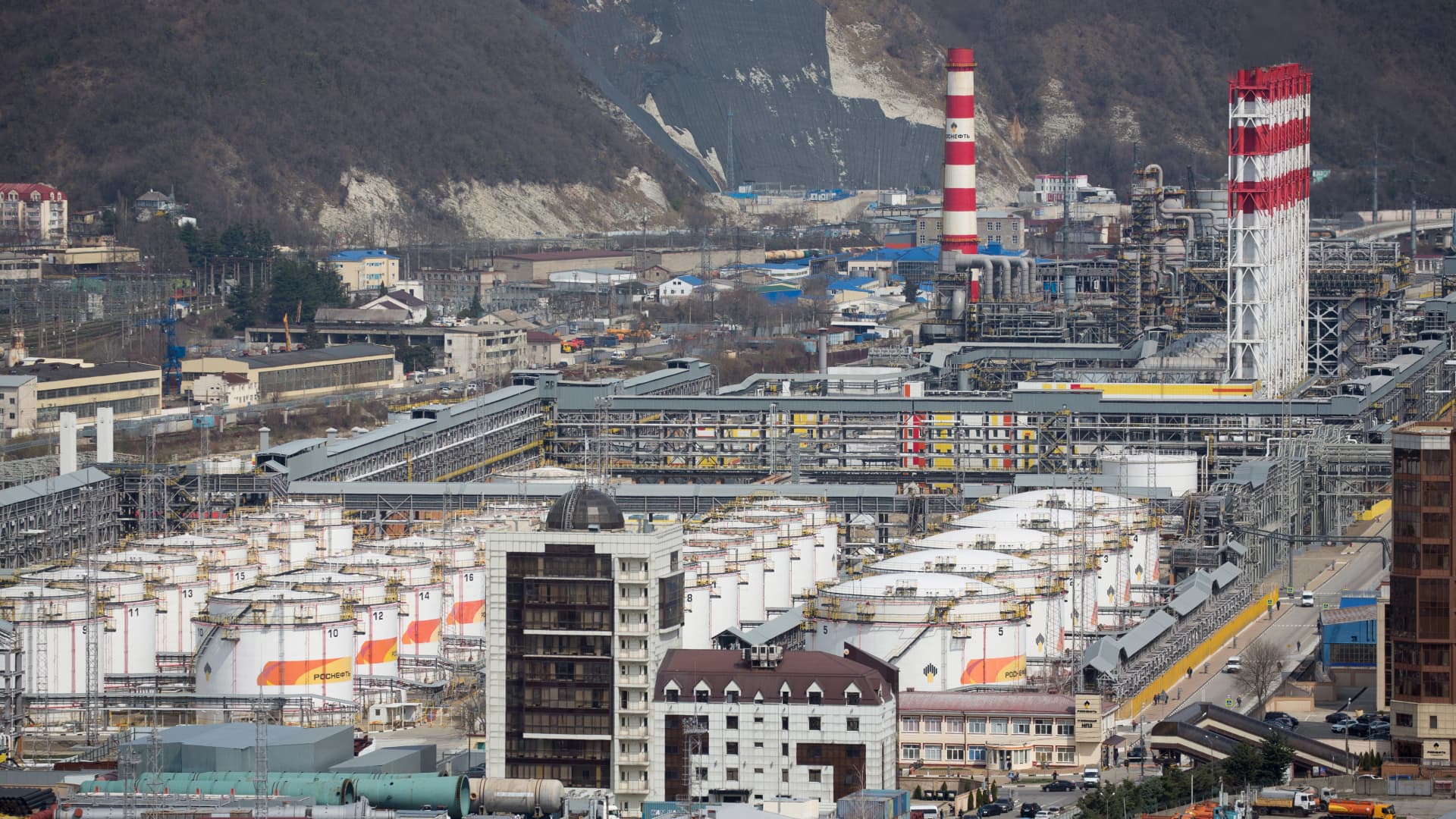Oil stares at a bleak future as China’s economy sputters. The good news: A market ‘bust’ is unlikely

The RN-Tuapsinsky refinery operated by Rosneft Oil Co. in Tuapse, Russia.
Andrey Rudakov | Bloomberg | Getty Images
SINGAPORE — As the world’s oil traders and analysts gathered at the annual Asia Pacific Petroleum Conference in Singapore last week, the slump in oil and where it was headed was foremost in everybody’s mind.
China, the main engine driving the world’s oil demand, has been sputtering. In the International Energy Agency’s most recent September report, year-on-year global oil demand grew 800,000 barrels per day in the first half of 2024, decelerating to its slowest growth since 2020 .
The main reason for the downturn is a “rapidly slowing China,” where consumption contracted for the fourth consecutive month in July, year on year. China is the world’s largest importer of oil as well as the second-largest consumer, making up 15% of global oil consumption.
This tepid demand, coupled with oversupply, drove U.S. crude prices to their lowest in over a year earlier this month. Iraq and Kazakhstan, key OPEC+ members, have produced above their monthly quotas under the oil group’s agreement.
Members of alliance have recently postponed plans to hike a planned output increase of 180,000 barrels per day in October, as part of a program to return a broader 2.2 million barrels per day to the market over the following months.
Given the situation, lower oil prices were the dominant theme in Asia’s largest oil conference. The question was not whether oil will go lower, but mostly by how much will it decline in the coming years.
Oil at $50?
Goldman Sachs’ Co-Head of Global Commodities Research Daan Struyven estimated that crude prices could fall to the low $60s per barrel level by within the next two years, if China demand remained tepid. He did not rule out an even steeper decline.
“We estimate that Brent could fall to roughly $50 per barrel in a moderate [U.S.] recession … We have a fairly benign view on the global economy,” Struyven said during the conference.
The U.S. economy has remained resilient even as high interest rates aimed at curbing sticky inflation have slowed growth and raised recessionary concerns. That said, Americans believe that the U.S. is already in a recession, according to a survey.
It’s hard to look beyond China when thinking about the supply and demand balance for next year.
Ben Luckock
global head of oil at Trafigura
“Things are slowing down. Doesn’t mean a bust, I don’t think so. Stagnant? Perhaps, and that’s bad enough for oil,” said Torbjörn Törnqvist, CEO of commodities trading house Gunvor.
Trading Giant Trafigura raised concerns about China’s weak demand, and the global oil consumption tied to it.
“It’s hard to look beyond China when thinking about the supply and demand balance for next year,” Ben Luckock, Trafigura’s global head of oil, told CNBC on the sidelines of the conference.
“I suspect we’re probably going to go into the 60s sometime relatively soon,” he said. Global benchmark Brent is currently trading at $73.09 per barrel, while U.S. West Texas Intermediate is at $70.57 per barrel.
Oil prices have fallen in spite of ongoing tensions in the Middle East, as well as the Russia-Ukraine conflict.
Luckock, however, warned about becoming too bearish. “It’s dangerous because there’s so many events out there that can ruin your day.”
“I wouldn’t put all your chips on the table being short,” he added.
India offers some hope
China’s slowdown has spurred some to scour for alternative oil demand drivers, with a few eyeing India as a potential candidate. India is the third largest consumer of oil at around 5 million barrels of oil per day, 5% of the world’s oil consumption.
According to IEA’s projections, India is poised to lead oil demand growth in 2024, surpassing China for the first time with an estimated increase of 200,000 barrels per day.
India is the world’s fastest growing large economy, and is targeting to overtake both Japan and Germany to become the world’s third-largest economy in as soon as 2027.
Hong-Bing Chen, general manager at Chinese refiner Rongsheng Petrochemical said that he sees further growth in India, as well as more consumption of gasoline and gas oil from the the South Asian nation.
Things are slowing down. Doesn’t mean a bust, I don’t think so. Stagnant? Perhaps, and that’s bad enough for oil.
Torbjörn Törnqvist
CEO of Gunvor
Others experts were more circumspect.
“Keep in mind that Indian demand is one-third of Chinese demand,” said Vandana Hari, founder and CEO of Vanda Insights. “So is there going to be another China in terms of global oil demand growth in our lifetime or potentially thereafter? I don’t think so,” she said.
India’s growth rate will be consistent and over the long term, well into the mid 2040s, but it’s not going to be the same size and magnitude as that of China’s, said Fereidun Fesharaki, chairman of energy consultancy Facts Global Energy.
World News || Latest News || U.S. News
Source link



